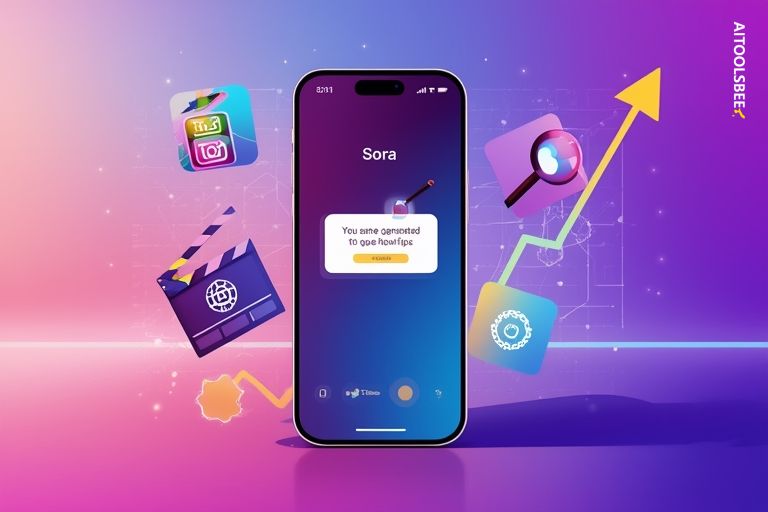
Sora’s Realism Pushes Video Beyond Proof as OpenAI Faces Scrutiny
At this moment, the line between evidence and entertainment is blurring on your phone as a new wave of AI video reaches mass audiences, led by Sora. The free iPhone app topped Apple’s charts shortly after release, yet access remains invitation-only through codes circulating on Reddit and Discord. Its arrival has jolted the culture of online media because a convincing clip now requires a sentence of text rather than a camera.
Built to feel familiar, the service opens like a short-form feed similar to TikTok or Instagram Reels, where users type a prompt or upload a photo and get a video in roughly a minute from Sora. Creations can be posted in-app or downloaded for sharing across TikTok, Instagram, YouTube Shorts, and Snapchat, and clips tend to be brief at up to ten seconds. OpenAI added a watermark and hidden file signatures, though users have already shown that a simple crop can remove the visible label.
The leap in fidelity is what sets Sora apart from rivals such as Google’s Veo 3 inside Gemini and Meta’s Vibe in the Meta AI app. That qualitative edge has immediate civic consequences because the river of short videos that defines modern social platforms is now primed for fabrications that look real. The new threshold means viewers must abandon the old assumption that video is the final word on truth.
Researchers have been warning that our instincts would lag behind the tools, a point underscored by Ren Ng of the University of California, Berkeley, who teaches computational photography and says we must pause before treating any clip as a record of reality made by Sora. The cultural habit of verifying events through visuals has flipped, so skepticism is becoming the default rather than a last resort.
Early experimentation has been playful, but documented misuse shows the risk profile of Sora. Testers have produced fake dashcam collisions complete with editable license plates, defamatory broadcast segments about private individuals, and spurious health claims delivered as newsy monologues, even though the company prohibits sexual content, malicious health advice, and terrorist propaganda. The company says it takes action when it detects misuse. The mix of short runtimes and removable watermarks makes reuploads harder to track once clips leave the app’s ecosystem.
Industry reaction has been swift as Hollywood studios voice concern that generated videos may infringe on existing films, shows, and characters, a debate that now runs through Sora. OpenAI CEO Sam Altman said the company is collecting feedback and will soon give rights holders control over character generation and a path to earn money from the service. Before that announcement, the company had required rights holders to opt out of having their likeness and brands used on the service, which left deceased people as easy targets for experimentation. Lucas Hansen of CivAI offered a stark assessment that nobody will accept videos as proof any longer, adding that any Hollywood-grade shot could be fake because models have largely been trained on TV and movie footage posted online.
OpenAI’s response includes technical tracing through watermarks and metadata so that videos can be linked back to Sora. The company said it released the tool as its own app to give people a dedicated space to enjoy AI-generated videos and recognize that the clips were made with AI. Yet the discovery that simple edits can hide origins reflects the wider market reality that detection and provenance tools must evolve as quickly as generation does. That dynamic opens room for startups, including in the UK, to build verification services and moderation layers as investors search for safety solutions that can scale across social platforms.
As competitors accelerate, Google and Meta already field their own generators, but side-by-side comparisons have highlighted that Sora produces clips that often look more convincingly real. Even so, users still spot telltale flaws like misspelled signage and speech that drifts out of sync, and Hany Farid of UC Berkeley argues that one of the surest defenses is to avoid social feeds entirely. His broader critique frames social media as a hostile environment for authenticity.
All of this unfolds while legal questions keep gathering, including a lawsuit in which The New York Times accuses OpenAI and Microsoft of infringing news content related to AI systems, claims the companies deny, a backdrop that adds pressure to how Sora is governed. The larger picture is a threshold moment in which generative video moves from studio labs to everyday feeds, and the next phase for enterprises will be deciding when synthetic footage helps with communication and when it undermines trust.

Provides balanced coverage of how technology creates real value
in both business and everyday life.

